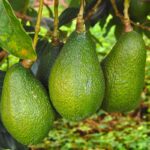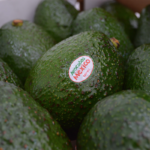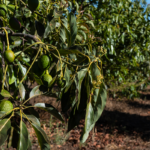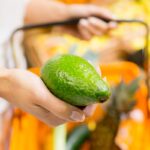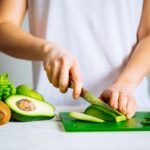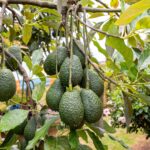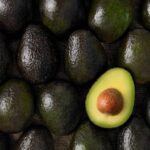How to plant and grow avocados
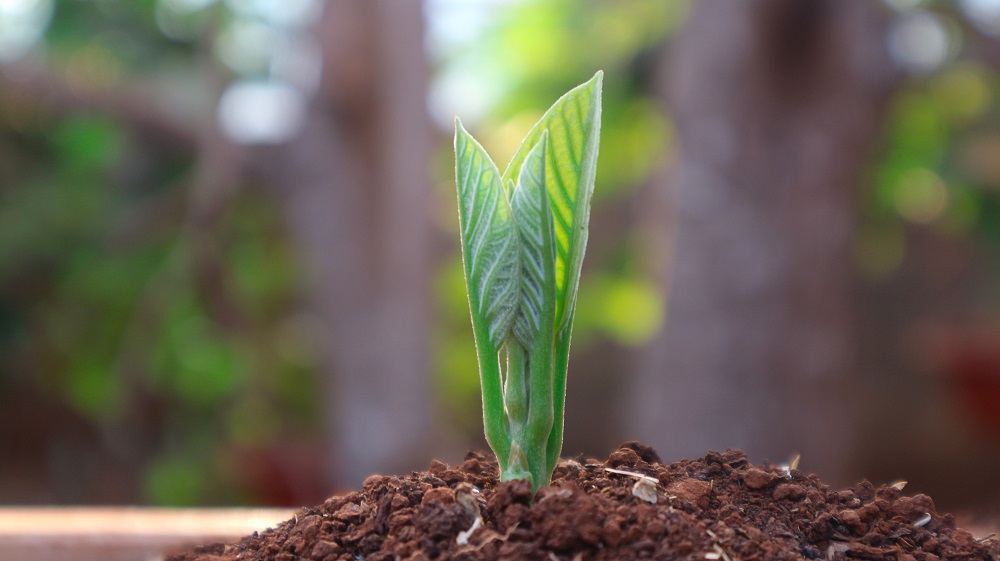
The content of this article was prepared by the Queensland Government's Department of Agriculture and Fishers in Australia.
Setting up a profitable avocado orchard requires careful planning and the right site. Use these guidelines to determine if your property has the right land and climate for growing avocados.
Purchasing trees
We recommend buying trees from an Avocado Nursery Voluntary Accreditation Scheme (ANVAS) accredited nursery. These trees grow in special nursery conditions so they’re free from root rot and other diseases. You can also request trees that are verified to be free from sunblotch viroid disease (indexed trees). If you plan to export fruit, some countries only permit fruit harvested from indexed trees.
Soil
Soil is the most important criteria when selecting an orchard site. Avocados are very sensitive to poorly-drained conditions and are also susceptible to Phytophthora root rot which thrives in poorly-drained soils. In high rainfall areas avocados require at least 1.5m of well-drained soil. In areas of lower rainfall at least 1m of well-drained soil is recommended
It is also strongly recommended that tree rows are mounded prior to planting. Ensure that the mounds are well designed so they don’t cause water to dam up but allow it to drain away quickly but without causing soil erosion.
Slope
Slopes of up to 15% are suitable if the orchard is already set up to minimise erosion. Avoid steeper slopes because they are a major erosion risk and make it difficult to operate machinery safely.
Aspect
Avoid windy sites to minimise abrasion of fruit and limb breakage. Plant on slopes that face away from the direction of the main prevailing winds and in warm areas avoid westerly slopes as they can be very hot and result in sunburnt fruit. You may need to plant windbreaks to protect your trees.
Climate
Frost-free areas are preferred, but mature trees will tolerate temperatures as low as -4°C for short periods without damage unless flower buds, flowers or fruit are present. Trees can also tolerate temperatures as high as 40°C for short periods, however fruit damage and losses can be expected. Growers in hot areas use overhead sprinklers (assuming good quality water is available) for evaporative cooling to preserve the crop during heat waves.
For avocado trees to produce flowers, a period of about 4 weeks of relatively cool temperatures needs to occur in autumn/winter. Flowering in Hass in coastal areas north of about Yeppoon will generally not be satisfactory. For fruitset to occur, periods of 3 days in a row are needed at flowering time during which the temperature does not drop below 10°C.
Tree spacing
Tree spacing depends on whether you opt for high, medium or low-density plantings.
- High-density plantings (more than about 500 trees/ha, e.g. 6m by 3m) give earlier returns, but cost more to set up. Because these plantings crowd together much sooner, you need to start pruning trees earlier. In warmer areas high-density plantings will be more difficult to manage and may be impractical because tree growth is faster.
- Low-density plantings (200 trees or less/ha, e.g. 10m by 5m) provide lower early returns per unit area but are easier to manage. However at low-density, trees are generally allowed to grow larger which will:
- increase picking costs
- reduce picker safety
- produce less fruit and of lower quality.
As a compromise, you can choose medium-density spacings (e.g. 9m by 6m).
Planting times
In areas where frosts occur, we recommend planting during September-October. In warmer areas, April-May is best to avoid very hot weather whilst plants get established.
Using beehives to pollinate
If your orchard lacks significant bee (or other pollinator insect) activity, we recommend 2 to 10 hives per hectare of trees to help pollinate avocado flowers. Introduce hives when about 10% of the flowers have opened. Order the required number of hives in advance.
Fertilising
Correct nutrition is critical but fertiliser treatments should be based on the results of regular soil and leaf analysis. In less fertile soils, soil analysis results may suggest adding lime, dolomite, phosphorus and selected trace elements before planting. If you need to apply fertiliser or manure before planting, do so 6 months before so it’s broken down and taken up by the soil before planting. These fertilisers pose less risk to tree roots. You should never use nitrogen, potassium or animal manures on or just before planting. Fertilising soon after planting can burn the tender feeder roots of the young tree.
You should pay particular attention to levels of:
- nitrogen
- boron
- calcium
- zinc
- soil pH.
Nitrogen encourages tree growth and canopy health. Boron is important to add before and during flowering for fruit set, calcium is important for fruit quality and zinc is an important trace element that is often deficient or unavailable in Queensland soils. Soil pH (measured in water) of about 5.5 is considered best but this level is impractical to reach in calcareous soils. Trees can grow successfully in pHs of up to about 7.5, although iron chlorosis can be an issue.
Soil and leaf analysis
Buy leaf and soil sampling kits from your local fertiliser agent and follow the sampling directions. Your local fertiliser agent may take the samples for you as part of their leaf and soil analysis service.
It’s important that you sample the right leaves and at the correct time in the growth cycle. Sample the most recently hardened leaf flush from branches without fruit. The correct time for leaf analysis is when the summer flush has hardened off (generally April-May in Queensland). A follow-up sample can be taken when the spring flush has hardened off (about December).
Soil analysis can be done at any time, but we recommend soil samples be taken at the same time as the leaf samples so the results can be interpreted together.
Published leaf nutrient guidelines are based on analysis of leaf tissue. Sap testing is occasionally used but requires specialist interpretation. Sample each variety or block of trees separately and avoid mixing leaves from trees of different ages.
Lime and dolomite
Lime or dolomite is only necessary about once every 2–3 years and the need to use it depends on your soil analysis results. If more than 2t/ha of lime or dolomite is needed, it is best to split the application into no more than 2t/ha at a time, with 612 months between applications to avoid trace element tie ups.
Foliar fertiliser
Foliar nutrient sprays aren’t generally recommended for avocados. The one exception is a foliar spray of boron at flowering where leaf boron levels are below 30ppm.
Pruning
Without canopy management, yield and fruit quality will deteriorate and trees will become more physically difficult to spray and harvest. The type of canopy management practice will depend on tree density and the growth habit of the variety. The aim of canopy management is to:
- keep trees to a practical size
- allow sunlight into the canopy to encourage flowering and fruitset
- rejuvenate the branches to keep them productive.
For a spreading, multi-branched variety such as Hass the most universally successful approach is to selectively remove 1 major limb per year, e.g. for a tree with 4 major limbs, no branch will ever be older than 4 years. Upright varieties, such as Lamb Hass trees, will need to be ‘topped’ every 2 or 3 years to keep height down, as well as some selective pruning of side branches.
Conduct major pruning after harvesting, i.e. during autumn or winter. Pruning too early in autumn (whilst temperatures are still high) could result in counterproductive rapid regrowth, whilst pruning too late (shortly before hot days are expected in spring or early summer) could result in sunburn to newly exposed limbs. We recommend seeking specialist advice and experiment with the timing and severity of pruning to find the most appropriate practice for your orchard.
Irrigation
Maintain an adequate water supply to the trees throughout the year, not only for meeting moisture requirements, but also for effective uptake of nutrients. It’s essential for avocado trees to have well-aerated soil; they cannot tolerate heavy or waterlogged soil, so it’s important to monitor the trees and soil as part of your irrigation process.
Avocado trees that don’t get enough water can experience:
- summer stress resulting in early flowering and poor fruit set
- increase of fruit shedding in spring and early summer
- reduced fruit size, particularly if stress occurs in the first 6-8 weeks after fruit set
- poor quality fruit due to reduced uptake of boron and calcium.
Too much water causes:
- reduced tree vigour as a result of reduced soil aeration
- increased incidence and severity of Phytophthora root rot
- increased risk of nutrient imbalances
increased leaching of nutrients from the root zone, which wastes fertiliser and poses an environmental hazard by polluting groundwater.
Water quality
Avocados are sensitive to poor-quality irrigation water. They require water that has a low conductivity value (low in soluble salts) and a low chloride content. Analyse new sources of irrigation water before use, and test existing sources regularly if a change in quality is possible. Water salinity should not exceed 0.6 deciSiemens/m (equivalent to 384 ppm total soluble salts) and chloride content should not exceed 80mg/L.
Irrigation timing
Irrigation is essential in most of Queensland, particularly from August to April. For coastal areas with high rainfall, a water storage reserve of 5 megalitres per hectare (ML/ha) is generally necessary to maintain production in a dry year. This needs to be increased to about 8-12 ML/ha in drier coastal areas and inland areas such as the Central Burnett of Queensland.
We recommend using an effective soil moisture monitoring system to help you schedule irrigation events. Devices used can include tensiometers, gypsum blocks and capacitance probes.
















